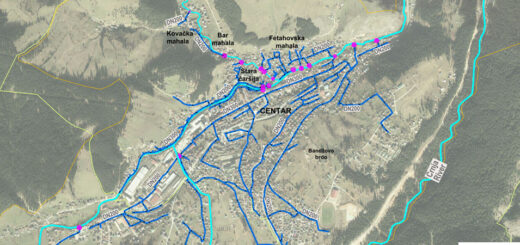Rožaje is a settlement that arose in the 7th century AD. Illyrians, Romans and Greeks lived here, and a little later the Slavic population also settled. In the immediate vicinity of the city, there are several archaeological sites from the Illyrian, Roman and Nemanic periods that have not been investigated in detail. These are the Illyrian settlement on Brezovački brdo, Gradina on Krstači mountain, Bačevac Sastanci in Bašča, Otaševo brdo and Mrs. vrh in Biševo.
The Turks occupied the regions of Bihor and Rožaj in 1455. Turkish censuses show that the population at that time was Christian. According to the data known so far, Rožaje has been mentioned under its current name since 1585, and the tradition of this name is linked to two limestone cliques-pillars in the shape of horns, not far from the Ganić Tower. According to another version, Rožaje (formerly Trgovište according to some historians) got its name because it was known as the center of horned cattle trade.

Varošica developed around two cores, the older one, around the fortress that was demolished and no longer exists, and the younger one, around the Ganić tower, which was rebuilt.
Since the beginning of the 18th century, the Rozaj-Peshter and Bihor areas have been inhabited by the exiled and escaped Catholic and Orthodox population from the surrounding areas, who accepted Islam. In the 18th and 19th centuries, under Turkish rule, Rožaje was an important administrative and commercial center with developed crafts and livestock fairs. The French travel writer Ami Bue in his travelogue from 1892 says that Rožaje has about 60 houses, a mosque and inns. During the Turkish rule, in addition to the small town of Rožaja, part of Bihor, Peštera and the Novopazar region belonged to the Rožaje family. At that time, in 1892, Rožaje included 81 villages. The wealth acquired by merchants from this region in the second half of the 19th century is shown in the saying from that era "If Constantinople burned, Rožaje would raise it".
"Rožajians are the best people in the world" - Nataša Kandić, President of the Fund for Humanitarian Law from Belgrade.
Rožaje and the people of Rožaj are known for providing hospitality to people in need during all past wars. And conflicts in the 19th and 20th centuries, as well as by traditional good interfaith coexistence, mutual help and understanding. As a place at the crossroads, Rožaje was named "Musafir's House" in which Bosnian refugees before the Austro-Hungarian occupation in 1878 and refugees from Kolašin after 1878 found refuge and hospitality only in the last 130 years.
In 1913, with the division of Sandžak, Rožaje became part of the Montenegrin state, and then it lost its former importance as a traffic station and administrative center. A special problem was the lack of roads. The old roads from the time of the Ottoman-Turkish administration have long ceased to serve their purpose, and new ones have not been built.
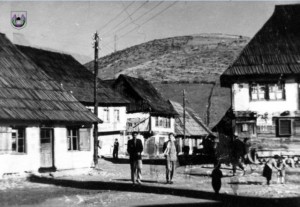
In this area, traffic was carried out by caravans, and the people of Rožaj were trade intermediaries between Kosovo and Polimlje. Unfavorable political changes led to a decrease in livestock and a sudden impoverishment of the population. Numerous houses are neglected, left to the ravages of time. The population emigrated to Turkey.
At the end of 1915, during the retreat of the exhausted Serbian army through Rožaje on the way to Albania, the people of Rožaje provided selfless help and hospitality to the soldiers, so as a sign of memory and respect for the people from this region, the surviving fighters after the First World War gave a street in Belgrade the name "Rožajska".
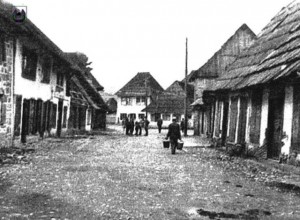
The period of Austro-Hungarian occupation from 1915 to 1918 is considered one of the most difficult periods in the history of this region. The so-called During the "hungry Swabian years", the population was dying from epidemics of typhus and cholera. In 1917, the Austrian authorities mobilized about 500 people from the Rožaj region and sent them to war in the Carpathians. A small number of them returned home.
In October 1918, the Serbian army took over the Rožaj region from the Austro-Hungarians, so that the same year the Kingdom of Serbs, Croats and Slovenes (SHS) was created. Between the two World Wars, there was religious and national inequality, poverty, and illiteracy.
In the 1930s, Rožaje had an insignificant economic role, the bazaar served only the most necessary local needs. People, preparing to go to Turkey, sold land for nothing.
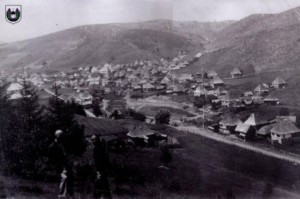
In spite of poverty and other difficulties, in 1937, on the initiative of Hivzija Ćatović, in the premises of the Vakuf tavern in Gornja čaršija, a public library was established with a reading room that gathered members of the Cultural and Art Society as well as members of the football club. The society worked actively until the beginning of the Second World War. In April 1941, the Roza region was occupied by Germans and Italians.
In 1943, the population in the territory of the Rozaj municipality provided shelter to columns of refugees from Bihor and Bosnia, and housed the Rozaj Orthodox population who were attacked by local gangs in their houses. Such neighborly solidarity and mutual rescue in wars is a tradition in this region.
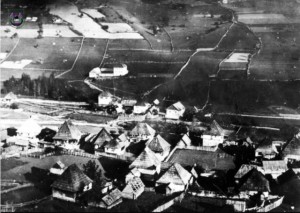
In August 1943, residents of Rožaj formed a partisan company and an illegal national liberation committee. In October 1943, the Rožaj communists went to the forest and founded the Rožaj partisan detachment. In the Battle of Prijepolje in December 1943, Rožaj proletarians died: Dedo Šehović, Jaho Kurtagić, Hilmo Zejnelagić and Mustafa Pećanin. Iljaz Hadžipećanin, as an illegal in Peja, was captured and hanged by the Germans, while Hivzija Ćatović was killed near Beran in 1944. During the People's Liberation War in Rožaje and its surroundings, 55 fighters were killed, 65 fighters were seriously wounded, 87 war orphans remained and there were 76 victims of fascist terror.
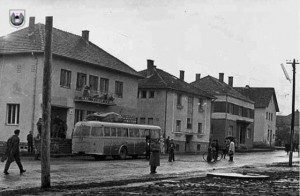
Rožaje was liberated during the Second World War on September 30, 1944, in battles that lasted a month and a half. Since then, a new period in the development of the city and its surroundings began. Immediately after the liberation, at the end of 1944, the Cultural and Educational Society "Hivzija Ćatović" was founded, within which the original folklore group "Dacića" was formed in 1947, which, during its activity (with several interruptions) until 1972, conquered numerous awards at folklore festivals.
During the bloody disintegration of Yugoslavia in the last decade of the 20th century, the people of Rožaj accepted and helped thousands and thousands of refugees from Bosnia and Herzegovina in 1992 and 1993, as well as in 1999, refugees from Kosovo.
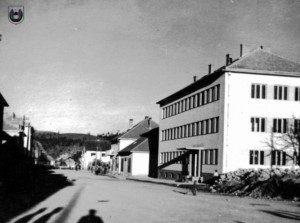
... Empires, kingdoms and states changed, and Rožaje survived in the green valley of the Ibar surrounded by forested mountains under a starry sky.
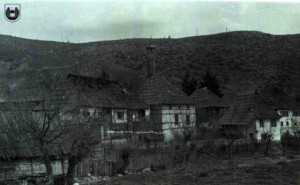
Today, Rožaje is gradually growing into a small modern city with a big heart. Today, the city is adorned with a new square, wide streets, tall residential buildings, business and shopping centers, a sports hall, sports fields...
